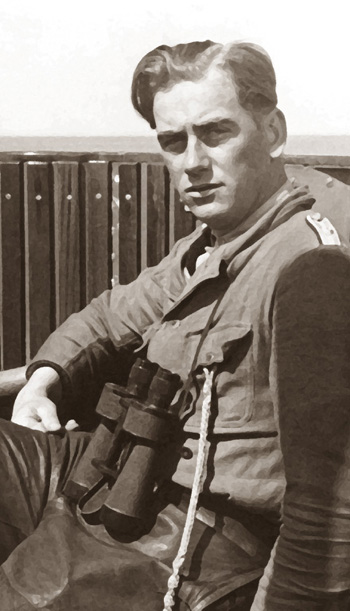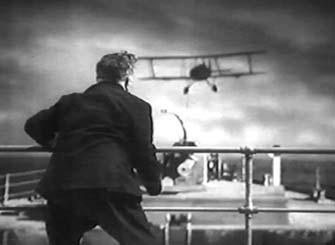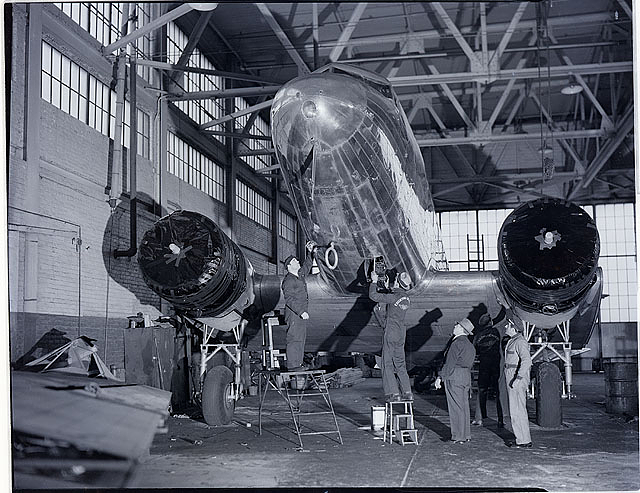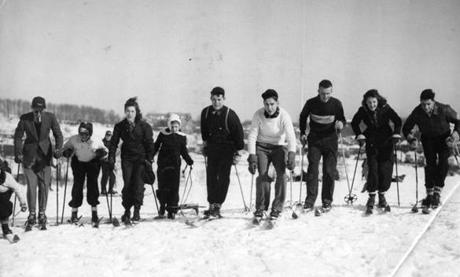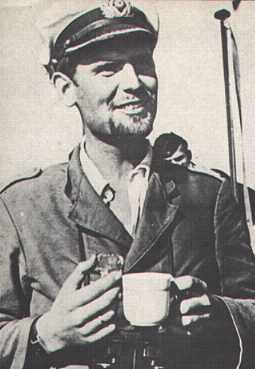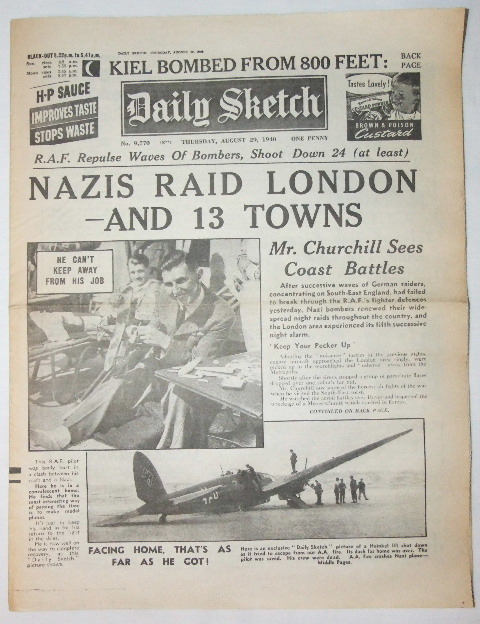Wednesday 22 January 1941
 |
| Italian troops surrendering in Tobruk, on or about 22 January 1941. |
East African Campaign: The Italian forces in Eritrea are falling back toward Akordat in the face of the British attacks from Sudan. The 4th Indian Division destroys the Italian defensive line at Keru, Eritrea, accepting the surrender of 1200 men and their commander, General Fongoli. The British also are advancing from Kenya into Italian Somaliland, though so far these are secondary attacks.
European Air Operations: RAF Fighter Command launches a Rhubarb sortie over Belgium and Holland. As intended, this draws up Luftwaffe fighter opposition. Feldwebel Mickel of 1./JG shoots down a British Beaufort fighter-bomber to the northwest of Terschelling, West Frisians around 13:00. Another member of I,/JG 1, Uffz. Krause shoots down a Blenheim bomber at Den Helder a couple of hours later for his first victory.
RAF Bomber Command attacks Dusseldorf during the night with 20 bombers.
The Luftwaffe remains quiet. It sends a few raiders across that hit various points in the eastern part of England, but no major attacks.
 |
| Australian troops (note the kangaroo pictures) with captured Italian tanks watching the burning of Tobruk, January 1941. |
The Luftwaffe (Focke-Wulf Fw 200 Condors of I,/KG 40) bombs and sinks 3574-ton Greek freighter Kapetan Stratis in the shipping lanes just northwest of Ireland. Everybody aboard perishes in the frigid winter water.
Royal Navy 234 ton minesweeping trawler Luda Lady hits a mine and sinks in the Humber. Everybody survives. Also sunk nearby is 810-ton tug HMS St. Cyrus. Some reports say everyone survives, others that most or all of the crew perish.
Norwegian 18673-ton liner Oslofjord has been beached near Newcastle upon Tyne, Northumberland since hitting a mine on 1 December 1940. Today after dark, the winter weather does her in and she is destroyed. The wreck is still sitting near the shoreline at 15 meters. The ship has a somewhat unusual design, with the lifeboats slung very high to give passengers more viewing space.
British 4098-ton freighter Jamaica Planter hits a mine in the Bristol Channel near Nell's Point, Barry Island. The crew manages to beach the ship before it can sink, and it later is refloated and repaired. There have been numerous ships lost or damaged to mines in this area over the past month.
Kriegsmarine torpedo boat T-1 runs aground off Kristiansand and requires extensive repairs, though the ship can still make way. The repairs take until July.
Convoy OB 277 departs from Liverpool, Convoy FS 392 departs from Methil, Convoy FS 393 is canceled, Convoy SC 20 departs from Halifax.
U-67 (Kapitänleutnant Heinrich Bleichrodt) is commissioned.
 |
| The New York Times, 22 January 1941. |
Overall, the Australians capture 20,000 soldiers, 87 tanks and 208 guns for the loss of 355 men (and 45 British troops). The Italian dead number 18 officers and 750 soldiers, with 30 officers and 2250 men wounded. The British are surprised to see how well supplied the Italian garrison is, with enough canned food to last two months, 10,000 gallons of water, and refrigeration/distillation equipment.
The British report that the desert sandstorms have been more of a hindrance than Italian resistance. This is a highpoint of Australian military success during World War II in the European Theater of Operations. At the end of the day, an Australian soldier's hat is flown from the highest flagpole over Tobruk (no Union Jack being found). Everyone is having a bit of well-deserved fun, but the rest of Libya remains to be captured.
General O'Connor of XIII Corps wastes no time in re-deploying his forces after the victory. He immediately orders the British 7th Armoured Division northwest toward the Jebel Akhdar Mountains in order to threaten Mechili and the Australian 6th Infantry Division north along the coast road to Derna. The Italians send forward the newly created Italian Special Armoured Brigade (Brigata Corazzato Speciale), General Valentino Babini commanding, to block the Allied advance. Unlike the static garrison forces that the Allies have overcome recently, this is a powerful mobile force with heavy infantry support.
The Italians are increasingly concerned about their grip on North Africa. They send a convoy three passenger liners (Esperia, Conte Rosso, Marco Polo) and a freighter (Victoria) from Naples bound for Tripoli to reinforce the Libyan garrison.
Having ably supported the conquest of Tobruk, Royal Navy monitor HMS Terror and gunboat Gnat return to Alexandria, along with destroyer HMS Voyager.
At Malta, the garrison is apprised by the War Office of scuttlebutt emanating from Rome that suggests the Germans are massing troops in Sicily for the conquest of Malta. However, air reconnaissance shows nothing unusual going on there in that regard. Governor Dobbie sends a reply that he believes the rumors are a "bluff."
Wendell Wilkie departs from New York bound for England by plane. He carries a personal letter to be hand-delivered to British Prime Minister Winston Churchill. This is another of Roosevelt's personal "fact-finding missions" to Europe by his personal chums, the most recent having been by Harry Hopkins.
 |
| A British soldier looks over captured Italian 149-35 and 120-25 guns at Tobruk, on or about 22 January 1941. |
The Iron Guard, as is often the case in Europe throughout the war, view this period of time as an opportunity to even up what they view as "old scores" against people they perceive as foreign elements within the local culture. However, while there is pure and unmistakeable ethnic animus involved, the Legionnaires also are interested in simply stealing from their victims anything that isn't nailed down, so it isn't just about racism and "payback." Antonescu retains the support of Adolf Hitler (who just wants a stable Romania he can use to take over the world), and German troops are sympathetic to Antonescu's government (on Hitler's orders). This helps Antonescu to begin planning countermeasures using the many loyal elements of the army in the hinterlands. Today is probably the height of the pogrom, and Antonescu orders the army to move in and restore order on the 23rd.
- Republicans Approve: 62%
- Republicans Disapprove: 32%
- Republicans Undecided: 6%
- Democrats Approve: 74%
- Democrats Disapprove: 20%
- Democrats Undecided: 6%
The chief reason why the majority of voters favor this lease-lend plan is that anything which helps England will serve to 'keep the war in Europe' and away from our shores. 'England is fighting our battle' is a typical comment.Thus, far from suggesting that the public would favor a US declaration of war and involvement in the fighting, the findings hint that people are happiest to do anything that keeps the United States out of the war. This issue illustrates how tricky polling can be.
Meanwhile, politicians of all conceivable stripes are taking sides on the Lend-Lease issue. The New York State League of Women Voters endorses the bill, for instance, while former Ambassador to the Court of St. James Joseph Kennedy opposes the bill because he feels that it gives President Roosevelt and the Executive Branch too much power, authority, and discretion.
January 1941
January 1, 1941: Muselier ArrestedJanuary 2, 1941: Camp Categories
January 3, 1941: Liberty Ships
January 4, 1941: Aussies Take Bardia
January 5, 1941: Amy Johnson Perishes
January 6, 1941: Four Freedoms
January 7, 1941: Pearl Harbor Plans
January 8, 1941: Billions For Defense
January 9, 1941: Lancasters
January 10, 1941: Malta Convoy Devastation
January 11, 1941: Murzuk Raid
January 12, 1941: Operation Rhubarb
January 13, 1941: Plymouth Blitzed
January 14, 1941: V for Victory
January 15, 1941: Haile Selassie Returns
January 16, 1941: Illustrious Blitz
January 17, 1941: Koh Chang Battle
January 18, 1941: Luftwaffe Pounds Malta
January 19, 1941: East African Campaign Begins
January 20, 1941: Roosevelt 3rd Term
January 21, 1941: Attack on Tobruk
January 22, 1941: Tobruk Falls
January 23, 1941: Pogrom in Bucharest
January 24, 1941: Tank Battle in Libya
January 25, 1941: Panjiayu Tragedy
January 26, 1941: Churchill Working Hard
January 27, 1941: Grew's Warning
January 28, 1941: Ho Chi Minh Returns
January 29, 1941: US Military Parley With Great Britain
January 30, 1941: Derna Taken
January 31, 1941: LRDG Battered
2020



